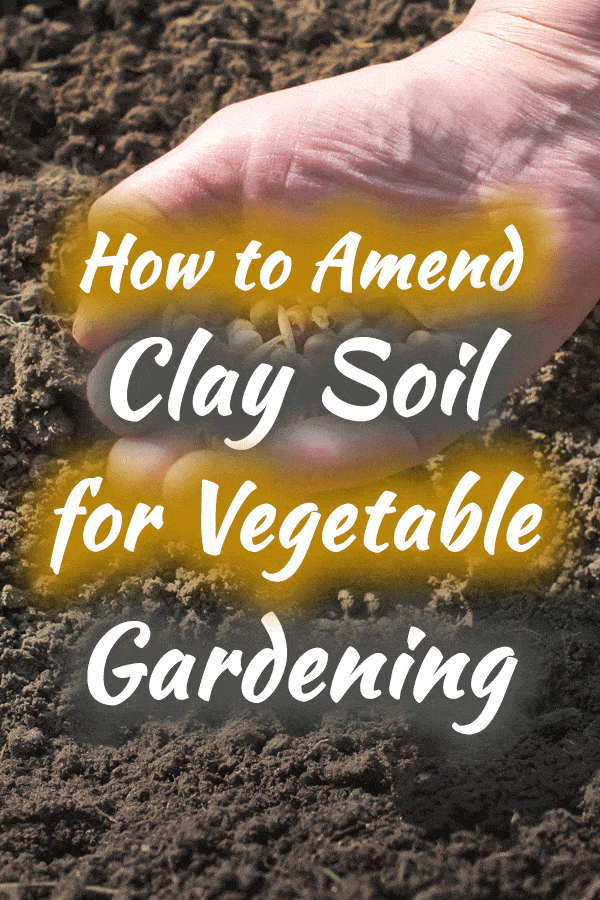 Starting a vegetable garden in clay soil can seem like a daunting task. Clay soils can be hard to work in, lack sufficient drainage, and often times have insufficient nutrients for abundant vegetable production. Luckily, we've done the research, in the field and on the web, to provide you will all of the information you need to transform your clay soil into a productive bed for vegetable gardening.
Starting a vegetable garden in clay soil can seem like a daunting task. Clay soils can be hard to work in, lack sufficient drainage, and often times have insufficient nutrients for abundant vegetable production. Luckily, we've done the research, in the field and on the web, to provide you will all of the information you need to transform your clay soil into a productive bed for vegetable gardening.
Amending clay soil for vegetable gardening requires a continual soil-building program. First, test the pH of your soil to see if it falls within the range required for vegetable production. Add organic material at regular intervals to increase the number of available nutrients and drainage. Placing a layer of mulch over the top of the planting area helps retain moisture, preventing the soil from cracking and adding organic material as it breaks down over time.
While that covers the basic format of how to amend clay soils, there's a lot more important information about the specifics of how, and when, to implement each step of your soil-building program. Keep reading to see how I've broken it down into easy to follow steps that will have you transforming your clay soil into an abundant vegetable garden in no time!
Test the pH

The first step in amending clay soils for vegetable gardening is to test the pH, or the measure of acidity and alkalinity, of the soil. The pH of the soil can affect the ability of your vegetables to absorb nutrients, and this is where all successful gardening projects must begin. The general range required for vegetable gardening is a pH between 6.5 to 7.0, though this may vary for some specific crops. You can find soil pH testing kits on Amazon here.
If your soil pH falls within the acceptable range for vegetable gardening, then you're ready to start gardening! If your pH level falls out of that range, then you should adjust the level before planting.
Add Organic Material at Regular Intervals
Organic material is the foundation of any healthy soil. Organic material adds nutrients to the soil, as well as increasing the drainage of notoriously compacted clay soils, and makes clay soils easier to work in. When, and how, to add organic material depends on the type of material that you are adding. Generally speaking, organic material should be worked into the soil with a shovel or digging fork to a depth of 6-8 inches and mixed evenly throughout the growing area to ensure regularity of soil composition and nutrients.
The three basic types of organic material to add to clay soils are:
- Coarse or Raw Material
- Compost or Fertilizer
- Cover Crops
Coarse or Raw Material
Coarse or raw materials can refer to any of the following ingredients:
- Leaves, grass, or other yard clippings
- Vegetable waste
- Straw
- Peat moss
- Fresh manure
- Any other amendments not yet fully decomposed
These ingredients should be only be added to the soil several months before planting. This is because the ingredients in these materials will not be immediately available to the plants until they are broken down by microbes in the soil, and can actually reduce the availability of already present soil nutrients as they decompose. The best time of year to add these ingredients is in the late fall so that they are fully broken down by the time you are beginning your spring planting.
Compost and Fertilizer
Compost and fertilizer are two ingredients in the recipe for soil health that can accelerate your soil-building program and result in much higher yields. Compost and fertilizer, unlike raw materials, can be added right up to the point of planting. Compost and fertilizer can be worked into the soil like raw ingredients, while additionally many gardeners will often layer a top dressing of compost 2-3 inches deep before each planting.
Cover Crop
A cover crop, sometimes called green manure, is a crop that you grow not for the purpose of eating, but to increase the health and productivity of your soils. Some examples of cover crops are:
- Alfalfa
- Fava beans
- Clover
- Buckwheat
Cover crops, with their deep taproots, help to loosen up compacted clay soils, as well as bring up nutrients to the surface from deep in the soil. To maximize the addition of organic material into your soils, cover crops should be tilled into the soil in a similar manner to other raw materials after their growing cycle is completed.
Mulch
Lastly, once you have tested the pH of your soil and added organic material, a final technique you can use to amend your clay soil is to apply a layer of mulch around your plantings. The best mulch for vegetable gardening is a thin layer of straw scattered over the surface of the soil. Mulching your soil will help with moisture retention, limiting the drying and cracking so common to clay soils. Additionally, mulch will also add more organic material to your soil as it decomposes.
Get out there and start digging!
If you find yourself wondering whether your soil is more suited for ceramics than vegetable gardening, don't give up hope. Building soil health is a long-term project, in nature it can take up to one thousand years for an inch of topsoil to form! Luckily, gardeners have learned how to greatly speed this process up, and if you follow the steps outlined in this post, you too can have an abundant vegetable garden in no time. So start digging!
